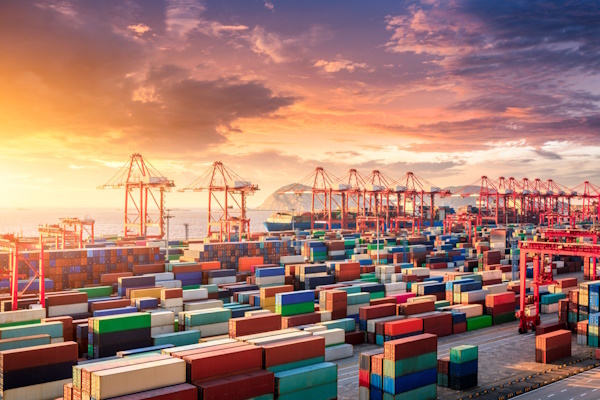Resilience, sustainability and a board game
Cases and tools for improving communication and collaboration in supply chains

In the carefree decade of roaring global trade between the mid-1990s and the 2008 credit crunch, supply chains became ever-more sprawling and geographically dispersed. The only focus was on saving costs, by leveraging mind-blowingly cheap container shipping services and labour in India and China.
While infinitely complex multi-tier supply chains delivered, visibility wasn’t an issue. It was the disruption that Covid wreaked on supply chains that revealed how unmanageable and irreparable they can get when some of their links break.
As a result, visibility and traceability were thrown into high relief, in an attempt to prevent a similar level of disruption and spirals of stockouts and panic buying from happening again.
Until this point, visibility of its supply chain was a nice-to-have for a business; a means to stay in the game when the next disruption bursts through the doorway while less agile competitors throw their hands up in the air.
From competitive advantage to litigation risk
What is propelling supply chain traceability up CEOs agendas today is the growing relevance of sustainability, and new legislation designed to make businesses responsible for what could previously be seen as collateral damage – their social and environmental impact.
On 24 April 2024, the European Parliament approved the Corporate Sustainability Due Diligence Directive (CSDDD), which – complementing the sustainability reporting directive passed earlier – requires businesses above a specified size and revenue operating in the EU to take responsibility for the environmental and social impact of their value chains.
Although we have seen the opposing trend of greenhushing, a politically motivated pushback against ESG discourse and action, in the United States, US companies doing business in the EU, if they are in-scope, must comply with regulations. As must companies below the threshold if they trade with in-scope companies.
To comply with CSDDD, by 2029, when the legislation will have been phased in completely, all companies – with a net turnover of €450 million (and more than 1,000 employees in the case of EU-based companies) and a presence in the EU – must prevent, mitigate or bring to an end any adverse social or environmental impacts they have identified.
By penalising businesses that don’t comply with fines of up to 5 per cent of net global revenue, the new directive is expected to push sustainability up on the financial risk checklists of CEOs and CFOs, as well as posing increased exposure to reputational risk.
As it allows for civil liability, CSDDD potentially also makes in-scope companies liable to pay compensation to those who they cause damage to by their negligence.
The beer game
The aim is for stricter regulations to force businesses to identify new priorities and methodologies when managing their supply chains, and become more resilient. With visibility becoming a top concern, information-sharing and co-ordination are taking centre stage.
Nothing demonstrates better how crucial these two are than a board game invented more than 60 years ago by Jay Wright Forrester at the MIT Sloan School of Management.
Forrester developed the game to give a hands-on experience of the complexities of supply chains through the example of the beer industry, to show them how co-operation can smooth out its imbalances.
The winner of the game is the team whose four members – a retailer, a wholesaler, a distributor and the manager of the brewery – can beat a major enemy of the supply chain: the bullwhip effect.
The bullwhip effect is a phenomenon where demand variability is amplified as it moves up a supply chain from retailers to manufacturers. If it’s not contained, slight changes in consumer demand get increasingly amplified along the supply chain by panicky forecasting and lead to excessive stocks – especially at the final, manufacturing level.
A team wins when each player reaches the target stock level and orders the same amount of beer each week for four consecutive weeks.
The winning strategy for managing fluctuations in demand efficiently is reducing the lead time of information on orders, inventory levels and forecasts – basically, any data linked to the supply chain.
While in the 1960s, supply chains were less intricate, practitioners of supply chain management today have digital technology to rely on when trying to get end-to-end visibility of their supply chains, or a platform where they can collaborate with their multi-tier suppliers.
Digital platforms and face-to-face rapport building
By offering access to a single source of truth, supply chain communication and collaboration platforms enable quick access to timely and accurate data for all participants.
One of their most important features, beside breaking down data silos, is that businesses managing multi-tier supply chains can communicate directly with their second, third or umpteenth suppliers – a great efficiency enabler when it comes to cutting down information lead times.
The fully-fledged multi-enterprise supply chain business networks available today started as EDIs or electronic data interchanges, where business documents were converted into standardised digital formats to ensure error-free, rapid data exchanges.
However, supply chain business networks providing end-to-end traceability, AI and ML capabilities and a control tower enabling what-if analyses and simulations of supply and demand changes can be pricey or even unaffordable for a great number of businesses.
But its components, such as procurement and supplier collaboration and carrier network platforms are available on the market separately too.
When selecting the one fitting a business’s need, there are some important criteria that should be considered: for example, the platform’s compatibility with enterprise systems, its geographic coverage (some only cover Europe), or industry-specific functionalities (there are ones designed for specific sectors).
Fear of the loss of confidential information and trade barriers being major impediments to supply chain traceability systems, it’s also important to look out for privacy features that ensure no corporate data leaks, or is accessed by unauthorised parties.
In view of more stringent sustainability regulations on the horizon, another important selection criteria is whether the platform supports compliance with regulatory standards or can be integrated with sustainability data bases such as amfori or WRAP.
But, similarly to other aspects of digital transformation, the human factor of supply chain management can’t be overstated. Old-school though it may sound, face-to-face meetings and the building of relationships with suppliers are pivotal to both resilience and compliance.
No matter how advanced and costly the technology a business deploys is, regular meetings and networking events with suppliers, especially the critical ones, remain key. In the end, nothing is as powerful as a phone call to a supplier you personally know and are on good terms with when it comes to sorting out a problem that has come out of the blue.

Zita Goldman
Most Viewed
Winston House, 3rd Floor, Units 306-309, 2-4 Dollis Park, London, N3 1HF
23-29 Hendon Lane, London, N3 1RT
020 8349 4363
© 2024, Lyonsdown Limited. Business Reporter® is a registered trademark of Lyonsdown Ltd. VAT registration number: 830519543





